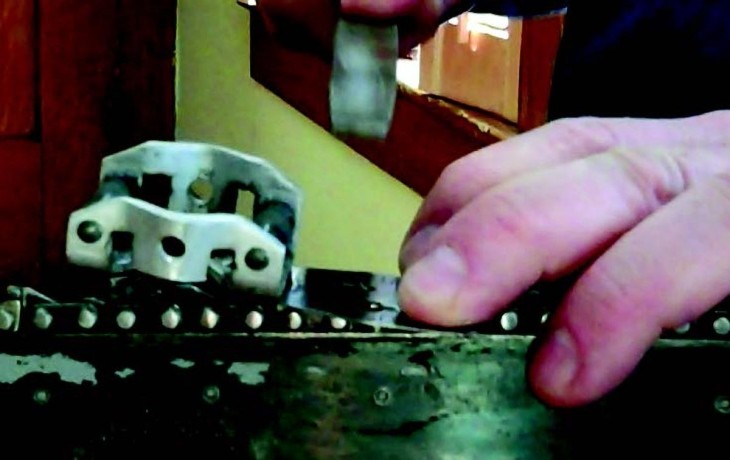Chainsaws, despite their blunt appearance, are precision tools that need to be carefully maintained to work properly. The chain is no exception to the rule.
There are two parts to maintain on a saw chain: the depth gauge, which determines the thickness of the chip that will be produced, and the cutting tooth, which hooks fiber with the working corner and slices the wood with both top and side cutting edges. To work properly, these two elements need to be aligned.
Filing a cutting tooth requires having your file in exactly the right place in three dimensions. If you are off in any way by even a hundredth of an inch, you will decrease the effectiveness of your chain with each file stroke. You can freehand it, but all but the most practiced are likely to remove metal that will make the chain less effective and will reduce the chain’s life. Unless you’re a pro, use a file guide.
There are two types of filing guides. Roller guides fit over the chain and bar to keep the file at the right height to file the tooth. To get the right roller guide, you will need to know your chain pitch. Oregon publishes a maintenance and safety manual that has the specs on every chain they sell. It is available here. The flat plate guide is a bit more forgiving in that it works with a variety of top plate angles. It snaps on to your file and has reference marks to guide you.
Once you’ve got the appropriate file guide, work on your filing technique. A good filer is a lot like a good crosscut saw operator, but a filer pushes instead of pulls. Practice smooth straight strokes that do not wobble up and down or side to side. Holding both ends of the file will help. Apply light but steady pressure against the cutting tooth as you file. File all the cutters on one side and then turn the saw around to do the rest. Try to keep all the teeth the same length, although this is a bit of a challenge when you’ve got a tooth or two that’s gotten chipped from hitting a rock.
Since the cutting teeth are higher front to back, each sharpening lowers the working surfaces slightly. Over time, this will bring the height of the cutter closer to the height of the depth gauge. Eventually, the saw will not cut no matter how sharp its teeth because the depth gauge will be too high for the cutting tooth to take a bite.
A depth-gauge filing plate with the proper setting for your chain will enable you to take the gauge down with a flat file to the correct depth. A depth gauge that is too low results in very aggressive cutting.
Northeast Woodland Training, an organization dedicated to teaching safe logging and forestry practices, produced an excellent DVD on saw sharpening. You can buy a copy of The Art and Science of Sawchain Sharpening, taught by safety instructor and professional logger John Adler on their website.





